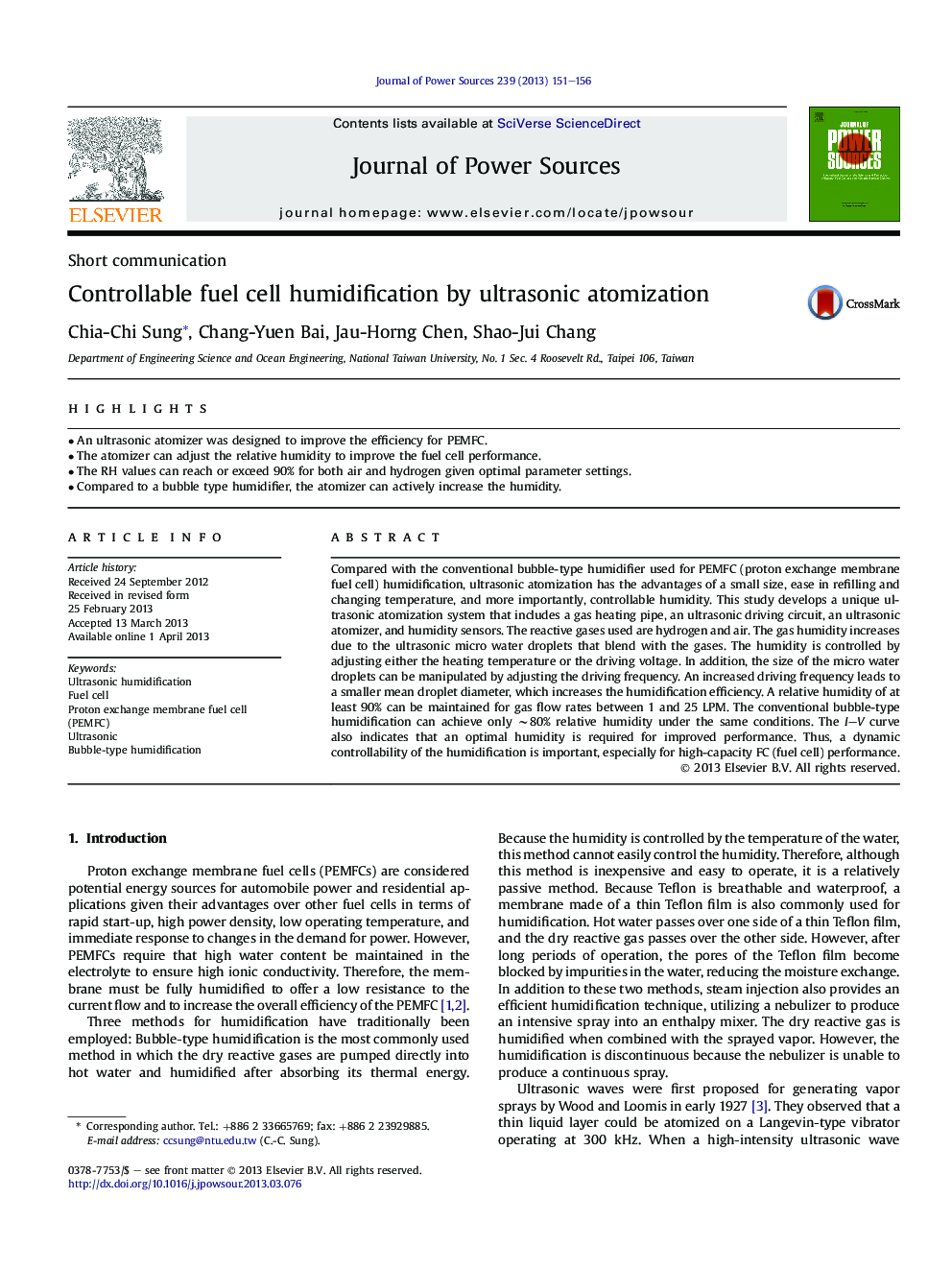| Article ID | Journal | Published Year | Pages | File Type |
|---|---|---|---|---|
| 7739731 | Journal of Power Sources | 2013 | 6 Pages |
Abstract
Compared with the conventional bubble-type humidifier used for PEMFC (proton exchange membrane fuel cell) humidification, ultrasonic atomization has the advantages of a small size, ease in refilling and changing temperature, and more importantly, controllable humidity. This study develops a unique ultrasonic atomization system that includes a gas heating pipe, an ultrasonic driving circuit, an ultrasonic atomizer, and humidity sensors. The reactive gases used are hydrogen and air. The gas humidity increases due to the ultrasonic micro water droplets that blend with the gases. The humidity is controlled by adjusting either the heating temperature or the driving voltage. In addition, the size of the micro water droplets can be manipulated by adjusting the driving frequency. An increased driving frequency leads to a smaller mean droplet diameter, which increases the humidification efficiency. A relative humidity of at least 90% can be maintained for gas flow rates between 1 and 25Â LPM. The conventional bubble-type humidification can achieve only â¼80% relative humidity under the same conditions. The I-V curve also indicates that an optimal humidity is required for improved performance. Thus, a dynamic controllability of the humidification is important, especially for high-capacity FC (fuel cell) performance.
Related Topics
Physical Sciences and Engineering
Chemistry
Electrochemistry
Authors
Chia-Chi Sung, Chang-Yuen Bai, Jau-Horng Chen, Shao-Jui Chang,
